Maintaining your vehicle involves several key aspects, and ensuring clear visibility through your windshield is paramount for safety. Just like knowing how to handle a flat tire or keeping your car fluids in check, regularly replacing your windshield wipers is a crucial part of auto maintenance. To simplify your choice, our team at keyfobx.com has rigorously tested numerous Windshield Wiper Brands available in the market. This guide will help you navigate the options and select the best windshield wiper brands to ensure clear vision in any driving condition.
We’ve all experienced sudden downpours where effective windshield wipers become indispensable. A reliable set of wipers is crucial for maintaining control, especially in challenging weather. While a premium option like Rain-X Silicone Endura offers exceptional silicone performance and water repellency, budget-conscious drivers might find the AERO Voyager J-Hook wipers an excellent, cost-effective alternative, delivering a premium beam-style design at an accessible price point.
Windshield wipers might not be the most glamorous car accessory, but their importance in driving safety is undeniable. The market offers a range of wiper types, from traditional to beam styles, and materials, from rubber to silicone. Understanding the nuances is key to choosing the right brand and product. We’ve conducted extensive testing in diverse conditions, particularly in the Pacific Northwest, known for its varied weather, to provide you with clear recommendations on windshield wiper brands that truly stand out.
Editor’s Note: This guide was updated on March 19, 2025, to include our new best budget pick, the AERO Voyager, and a top recommendation for winter driving, the Anco Winter Wiper. We continually assess and update our recommendations to reflect the best windshield wiper brands and products available.
Best Overall Windshield Wiper Brand
Rain-X Silicone Endura
Rating: 9.1 / 10
Learn more about our product rating methodology
Key Features:
- Wiper Style: Beam
- Blade Material: Silicone
- Available Lengths: 14-28 inches
- Attachment Types: J-hook, pinch tab, pinch tab button, pin arm, side pin
Pros:
- Superior silicone blade with graphite coating for extended lifespan compared to rubber wipers.
- Elevated pivot point enhances clamping force for consistent windshield contact.
- Silicone blade creates a water-repellent effect, improving visibility.
- Secure locking clasp for firm attachment.
Cons:
- Pricier than many other windshield wiper brands.
- May not be as widely available as Rain-X’s Advantedge Premium line.
Expert Review:
The Rain-X Silicone Endura is undeniably a leading windshield wiper brand, offering one of the best overall products currently available. It masterfully combines a robust beam design, a durable silicone blade, and a built-in water repellent feature. Our tests confirmed its long-lasting performance and impressive results.
Silicone wiper blades represent a significant advancement over traditional rubber squeegees. They are inherently resistant to degradation from UV exposure, ozone, and temperature extremes. Furthermore, as these silicone blades wear, they deposit a microscopic layer of silicone on your windshield, mimicking the effect of Rain-X water repellent treatments. This results in water beading and rolling off your windshield with remarkable efficiency.
In direct comparisons, the Silicone Endura wipers exhibited minimal streaking and operated exceptionally quietly, even at high speeds. Consistent with silicone blade technology, their performance tends to improve over time as the silicone coating builds up on the glass. Running the wipers dry for a few cycles can accelerate this bedding-in process and enhance the water-beading effect right from the start.
The mounting mechanism of the Silicone Endura is engineered for durability and features a slightly elevated pivot point. This design increases the clamping force against the windshield, ensuring consistent contact. While the J-hook attachment has a somewhat intricate release, it becomes straightforward once you understand the technique: pivot the blade to a perpendicular position and then depress the tab. The inclusion of a locking clasp adds an extra layer of security, preventing accidental detachment.
Interestingly, when compared side-by-side with the premium PIAA Si-Tech wipers, we observed virtually no discernible differences, even down to matching serial numbers. This suggests a strong similarity in manufacturing, making the Endura an exceptional value, often available at a lower price point than the PIAA. For most drivers seeking top-tier performance and durability, Rain-X Silicone Endura is a leading brand and an excellent choice.
Best Budget Windshield Wiper Brand
AERO Voyager J-Hook
[Check Price at Walmart][$17 at Amazon]
Rating: 6.1 / 10
Learn more about our product rating methodology
Key Features:
- Wiper Style: Beam
- Blade Material: Rubber
- Available Lengths: 13-28 inches
- Attachment Types: Small and large J-hook
Pros:
- Exceptionally affordable, especially considering it’s a set of two wipers.
- DuPont Teflon coating enhances wiping performance and reduces friction.
- Includes a 1-year warranty, offering peace of mind.
- Comes with a bonus set of replacement rubber wiper elements, extending product life.
- Aerodynamic design with a wiper arm cover, improving performance and aesthetics.
Cons:
- Limited to J-hook attachment style, restricting compatibility.
- Rubber blades may not clear water as effectively as silicone and can sometimes squeak when dry.
Expert Review:
Previously, we often recommended traditional branch-style wipers for budget-conscious buyers. However, after testing the AERO Voyager J-Hook Wiper Blades, we’ve revised our recommendation. This brand offers modern beam wipers at an incredibly competitive price, often half the cost of our previous budget pick.
Priced at just $17 for a pair, the AERO Voyager wipers are remarkably affordable. The value proposition is further enhanced by the inclusion of a spare set of rubber wiper elements and a 1-year warranty. AERO stands out among windshield wiper brands for incorporating replaceable squeegees, promoting environmental responsibility by extending the lifespan of the product.
Our performance tests, both stationary and during driving, revealed that while the rubber wiper elements might not disperse water as efficiently as silicone blades, the Teflon treatment significantly minimizes the squeaking commonly associated with untreated rubber wipers.
The 1-year warranty is a standout feature, surpassing most other brands, including even our top pick which only offers a 90-day warranty. This extended warranty adds considerable value, particularly if you encounter any unexpected issues. We’ve used these wipers for six months without any problems, demonstrating their reliable performance.
The primary trade-off for the budget price is attachment compatibility. The Voyager blades are exclusively compatible with J-hook wiper arms. If your vehicle requires a different attachment style, consider Trico Flex blades as an alternative budget brand. However, for vehicles with J-hook arms, AERO Voyager wipers are arguably the best value available.
Best Branch-Style Windshield Wiper Brand
SilBlade Standard
Rating: 6.8 / 10
Learn more about our product rating methodology
Key Features:
- Wiper Style: Branch
- Blade Material: Silicone
- Available Lengths: 11-28 inches
- Attachment Types: J-hook, pin arm
Pros:
- Silicone wiper performance at a more budget-friendly price point.
- Wide range of available lengths to fit various vehicles.
- Robust powder-coated steel design, more durable than typical branch wipers.
Cons:
- Mounting hardware may not feel as secure and limited attachment options.
- Branch-style design less effective in heavy snow conditions.
Expert Review:
Typically, choosing a branch-style windshield wiper often means settling for cheaper rubber squeegees. However, SilBlade Standard wipers defy this expectation. For drivers in drier climates where the superior performance of beam-style wipers might not be essential, SilBlade offers an economical option without compromising on key features. This brand delivers silicone wiper blades at a competitive price within the branch-style category.
In our wiper testing, the SilBlade Standard achieved mid-pack performance. They exhibited minimal streaking and noise, although we noted slight shuddering at the end of each stroke. While noticeable in slow-motion footage, this is unlikely to be a significant distraction during normal driving.
Available in a broad spectrum of lengths from 11 to 28 inches, SilBlade Standard wipers are compatible with a wide array of vehicles. Attachment options, however, are limited to the most common J-hook and pin arm types. Installation on our test truck was straightforward, but owners of European vehicles might face compatibility issues.
For those seeking a more contemporary design, SilBlade also produces beam-style FlexBlade and hybrid UniBlade wipers. The SilBlade Standard brand is a solid choice for consumers who want to avoid bargain-bin options but don’t require top-tier performance, offering silicone quality in an accessible branch-style format.
Best Beam-Style Windshield Wiper Brand
Bosch Icon
[$26 at Amazon][Check price at Tire Rack]
Rating: 8.9 / 10
Learn more about our product rating methodology
Key Features:
- Wiper Style: Beam
- Blade Material: Rubber
- Available Lengths: 13-28 inches
- Attachment Types: J-hook, side-lock, pinch-tab, top-lock
Pros:
- Premium beam design offering exceptional flexibility and windshield conformity.
- Among the easiest windshield wipers to install, featuring a user-friendly locking clasp.
- Excellent choice for cold climates where silicone blades might be prone to tearing.
Cons:
- Traditional rubber blades may not perform as well as silicone across all weather conditions.
- Attachment type selection is not as extensive as some competitors.
Expert Review:
The Bosch Icon wiper blades have earned their widespread popularity, and our tests confirmed their deserving reputation. As a leading windshield wiper brand in the beam-style category, Bosch has perfected this design, offering a smooth flexing pattern and an optimized curvature that ensures consistent contact with your windshield.
While we generally advocate for silicone wipers due to their superior performance, the rubber compound used in the Icon blades is certainly effective. Our testing demonstrated that these wipers clear water efficiently, even outperforming Rain-X Latitudes in streak reduction. Longevity might be a slight drawback compared to silicone, but this is inherent to rubber materials and not a reflection of build quality.
Installation of the Bosch Icon wipers was the easiest among all brands we tested for this guide. The simple locking clasp secures the blade in one motion, a welcome feature compared to other wipers that often require more fiddling and can pinch fingers. Removing these wipers was equally effortless, a notable advantage appreciated by our testing team.
In very cold and icy conditions, silicone wiper blades can become somewhat rigid and susceptible to tearing if forced over ice buildup on an uncleared windshield. If you frequently drive in such conditions, opting for robust rubber wipers like the Bosch Icon might be a more practical choice. Bosch stands out as a top windshield wiper brand for beam-style rubber blades, particularly in colder climates.
Best Premium Windshield Wiper Brand
PIAA Si-Tech
[$36 at Amazon][Check price at Tire Rack]
Rating: 9.2 / 10
Learn more about our product rating methodology
Key Features:
- Wiper Style: Beam
- Blade Material: Silicone
- Available Lengths: 14-28 inches
- Attachment Types: J-hook, push-button arm, side-pin, bayonet, pin & hook
Pros:
- High-performance beam design paired with premium silicone wipers.
- Includes windshield prep wipes to enhance silicone water-repellent treatment effectiveness.
- PIAA offers wiper refills, extending the overall lifespan and value.
- Backed by a 1-year limited warranty.
Cons:
- Lacks a locking clasp feature.
- More expensive than many other windshield wiper brands.
Expert Review:
As previously noted, the PIAA Si-Tech windshield wipers appear remarkably similar to the Rain-X Silicone Endura, with only subtle differences. Whether these distinctions justify the price difference is subjective, but they position the Si-Tech as our top premium wiper brand.
One key differentiator is the inclusion of a windshield preparation pack with every set of Si-Tech wipers. This pack contains an alcohol cleaner and liquid silicone, designed to maximize the effectiveness of the silicone wiper blades. This elevates the water-repellent performance beyond that of standard silicone wipers alone. While comparable results can be achieved using aftermarket products like Rain-X treatment, the integrated approach of PIAA sets them apart.
Furthermore, PIAA uniquely offers silicone wiper refills for the Si-Tech line, a feature not available with Rain-X wipers. This significantly extends the life of the wipers and represents a long-term value proposition.
The beam design of the PIAA Si-Tech is on par with the best from Rain-X and Bosch in terms of water clearing efficiency. The blade maintains full contact with the windshield, resulting in minimal to no streaking. Noise levels were also among the lowest recorded in our tests. Even as the initial windshield treatment fades, the silicone blades continue to deposit a water-repellent layer, sustaining long-term performance.
While the Rain-X Silicone Endura offers comparable performance at a lower price, the added features of the PIAA Si-Tech, particularly the prep kit and refill availability, make them the top choice for drivers seeking ultimate, turn-key performance from a premium windshield wiper brand.
Best Winter Windshield Wiper Brand
Anco Winter Wiper
Rating: 7.0 / 10
Learn more about our product rating methodology
Key Features:
- Wiper Style: Branch
- Blade Material: Rubber
- Available Lengths: 11-24 inches
- Attachment Types: J-hook, side pin, small and large bayonet styles
Pros:
- Full rubber cover encases the wiper, providing maximum protection against snow and ice buildup.
- Rubber wiper elements are less prone to tearing in extremely low temperatures.
- Affordable price point, making them a practical seasonal choice.
Cons:
- Overall wiping performance is not as refined as other top-rated wipers.
- Wiper arm mount design is not the most robust.
Expert Review:
Winter conditions can be particularly harsh on windshield wipers. While silicone beam wipers like the Bosch Icon perform admirably, they can also suffer wear and tear in severe winter weather. Similar to switching to snow tires for winter, we recommend using dedicated winter wipers. The Anco Winter Wiper Blades are our top recommendation as a specialized winter windshield wiper brand.
These wipers are designed for functionality over aesthetics. Their key winter-ready feature is a thick rubber sleeve that completely encases the blade structure. This prevents snow and ice from accumulating within the wiper frame, a common issue that leads to chattering and reduced effectiveness in winter conditions. After a full season of use in snowy conditions in the North Cascades, the Anco Winter Wipers proved their worth.
The wiper blades themselves are made of rubber. While rubber might not be our top choice for water clearing in general, it is more resilient to damage when dragged across icy windshields compared to silicone, which can tear. We found their performance adequate for typical Pacific Northwest winters, especially when combined with a Rain-X treatment on the windshield. Note that the Anco wipers themselves do not have a water-repellent coating, so treating your windshield is beneficial.
The connection point is designed for ease of use and compatibility, fitting hook, side-pin, and small/large bayonet-style wiper arms. We had no issues installing them on our Honda CRV at the start of winter and swapping back to our regular wipers in the spring.
An added benefit of seasonal wiper swaps is extending the lifespan of your summer wipers. Anco Winter Wipers are our recommended brand for a dependable and affordable set of winter-specific blades.
Other Notable Windshield Wiper Brands
The wipers highlighted above are our primary recommendations, often used on our own vehicles year-round. However, the market offers numerous other viable options. Consider these alternative windshield wiper brands and models as you make your choice.
Trico Silicone Ceramic
[$27 at Amazon][Check price at Tire Rack]
Rating: 7.1 / 10
Learn more about our product rating methodology
Key Features:
- Wiper Style: Beam
- Blade Material: Silicone
- Available Lengths: 14-28 inches
- Attachment Types: J-hook, push button, side-pin, pinch-tab
Pros:
- Highly aerodynamic design, enhancing performance at higher speeds.
- Silicone wiper elements with a ceramic coating to minimize friction and improve smoothness.
- Excellent and consistent contact across the entire windshield surface.
Cons:
- Among the more expensive windshield wiper brands.
- Broad attachment base may slightly restrict flex across the full wiper length.
Expert Review:
The Trico Silicone Ceramic wipers are positioned at the higher end of the price spectrum, but they deliver a range of premium features. Their price reflects the advanced material science incorporated into these blades, particularly the ceramic coating designed to ensure exceptionally smooth operation.
Wiping performance is comparable to top-tier brands like PIAA Si-Tech and Rain-X Silicone Endura. The ceramic coating is expected to enhance the longevity of these blades by reducing friction, a key factor in wiper wear. Dirty windshields are a primary cause of wiper blade degradation, and the ability of these blades to glide smoothly over debris should contribute to their extended lifespan.
The aerodynamic design, featuring an integrated spoiler, is the most pronounced in our test group. While we remain skeptical of quantifiable downforce generation, the design undoubtedly promotes consistent blade contact, even at higher speeds, eliminating wiper shudder.
Choosing between Trico Silicone Ceramic and PIAA Si-Tech often comes down to preference. We slightly favor the PIAA due to its more aggressive curvature and included windshield prep wipes. However, in terms of long-term performance and advanced material technology, Trico Silicone Ceramic is a strong contender among premium windshield wiper brands.
Rain-X Latitude Water Repellency
Rating: 7.3 / 10
Learn more about our product rating methodology
Key Features:
- Wiper Style: Beam
- Blade Material: Rubber
- Available Lengths: 14-28 inches
- Attachment Types: J-hooks, pinch-tab, pin-arms, pinch-tab button
Pros:
- Rain-X silicone coating on rubber blades enhances smooth operation.
- Well-curved beam design for effective windshield contact.
- Quiet performance, even at high wiper speeds.
Cons:
- Bulkier attachment mount compared to some competitors.
- Rain-X treatment is not permanent and can feel slightly greasy to the touch.
Expert Review:
The Rain-X Latitude Water Repellency wipers occupy a solid mid-tier position in our rankings. They offer a good balance of water clearing capability, a robust beam design, and the added benefit of a Rain-X coating to reduce friction and improve smoothness. For a rubber wiper blade, they are a top performer in their category.
These wipers offer a 2-in-1 approach, integrating a silicone treatment directly into the rubber blades. This treatment is gradually transferred to the windshield during initial use, providing a water-repellent effect. While not as long-lasting as dedicated silicone blades or a separate wipe-on treatment, it is effective, with water beading noticeable after just a few wipes in our tests. We observed the treatment lasting through a typical summer and fall season in the Pacific Northwest.
The beam design is similar to the Rain-X Silicone Endura but features a slightly more pronounced curve, which helped maintain contact with the windshield during high-speed testing. The attachment mount is somewhat bulky, which may slightly increase wind resistance compared to sleeker designs.
Often available around $18 per wiper, the Latitude Water Repellency blades represent excellent value in the mid-range category. Combining them with Rain-X Washer Fluid Additive can further enhance and prolong the water-beading effect throughout the year, bridging the performance gap with full silicone wipers without the higher cost.
Trico Flex
Rating: 6.9 / 10
Learn more about our product rating methodology
Key Features:
- Wiper Style: Beam
- Blade Material: Rubber
- Available Lengths: 13-32 inches
- Attachment Types: J-hook, pinch-tab, side-pin, push-button, side-lock, bayonet
Pros:
- Very budget-friendly pricing.
- Solid beam design for consistent windshield contact.
- Wide range of available lengths, accommodating many vehicles.
Cons:
- Minor streaking observed during performance testing.
- Plastic frame feels less robust and has a less aggressive curvature.
Expert Review:
A close competitor for our best budget wiper award, the Trico Flex blades offer impressive features for their affordable price. While they utilize more economical rubber wiper inserts, the beam design is well-executed, providing excellent water clearing and only minimal streaking in our tests.
Performance-wise, Trico Flex compares favorably to Bosch Icons, with the primary advantage of the Icons being their superior attachment mechanism. However, the Trico Flex blades performed admirably in our tests, leaving little room for complaint.
In hand, the Trico Flex blades exhibit a slightly less premium build quality compared to higher-priced models. The plastic frame and mount feel somewhat less substantial. Attachment compatibility is also slightly less extensive, so owners of vehicles with less common wiper arm types may need to explore other options.
Despite these minor drawbacks, Trico Flex wipers are an excellent budget choice. They offer dependable performance across various testing metrics and are particularly suitable for drivers who don’t require top-of-the-line performance or live in areas with infrequent rainfall.
Extensive testing ensures our windshield wiper brand recommendations are reliable and effective.
Windshield Wiper Brand Comparison Chart
| Windshield Wipers | Price (Per Wiper) | Wiper Style | Blade Material | Available Lengths |
|---|---|---|---|---|
| Rain-X Silicone Endura | $26 | Beam | Silicone | 14-28” |
| AERO Voyager J-Hook | $8 | Beam | Rubber | 13-28” |
| SilBlade Standard | $26 | Branch | Silicone | 11-28” |
| Bosch Icon | $30 | Beam | Rubber | 13-28” |
| PIAA Si-Tech | $36 | Beam | Silicone | 14-28” |
| Anco Winter Wiper | $25 | Branch | Rubber | 11-24” |
| Trico Silicone Ceramic | $36 | Beam | Silicone | 14-28” |
| Rain-X Latitude Water Repellency | $18 | Beam | Rubber | 14-28” |
| Trico Flex | $17 | Beam | Rubber | 13-32” |
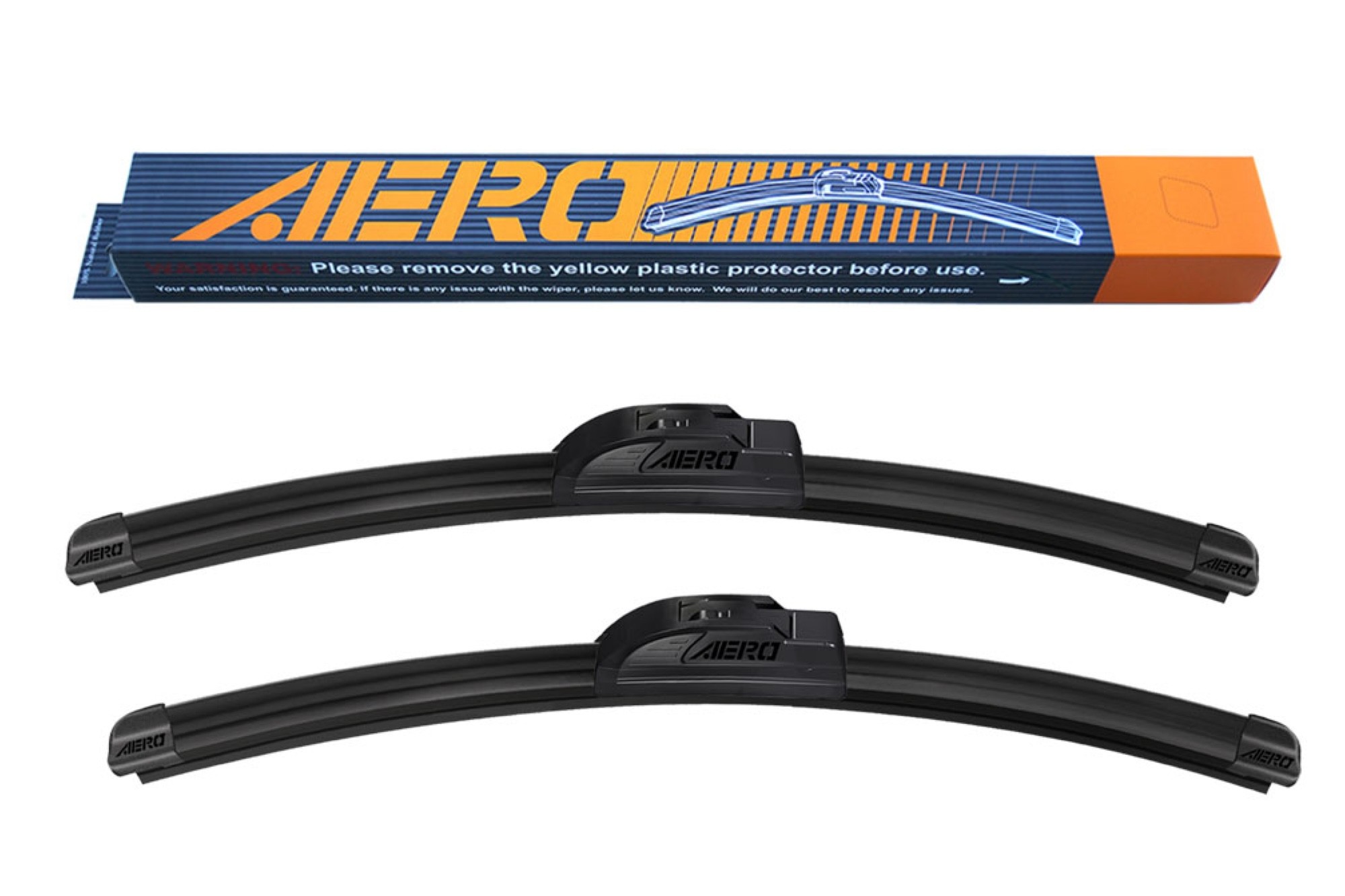

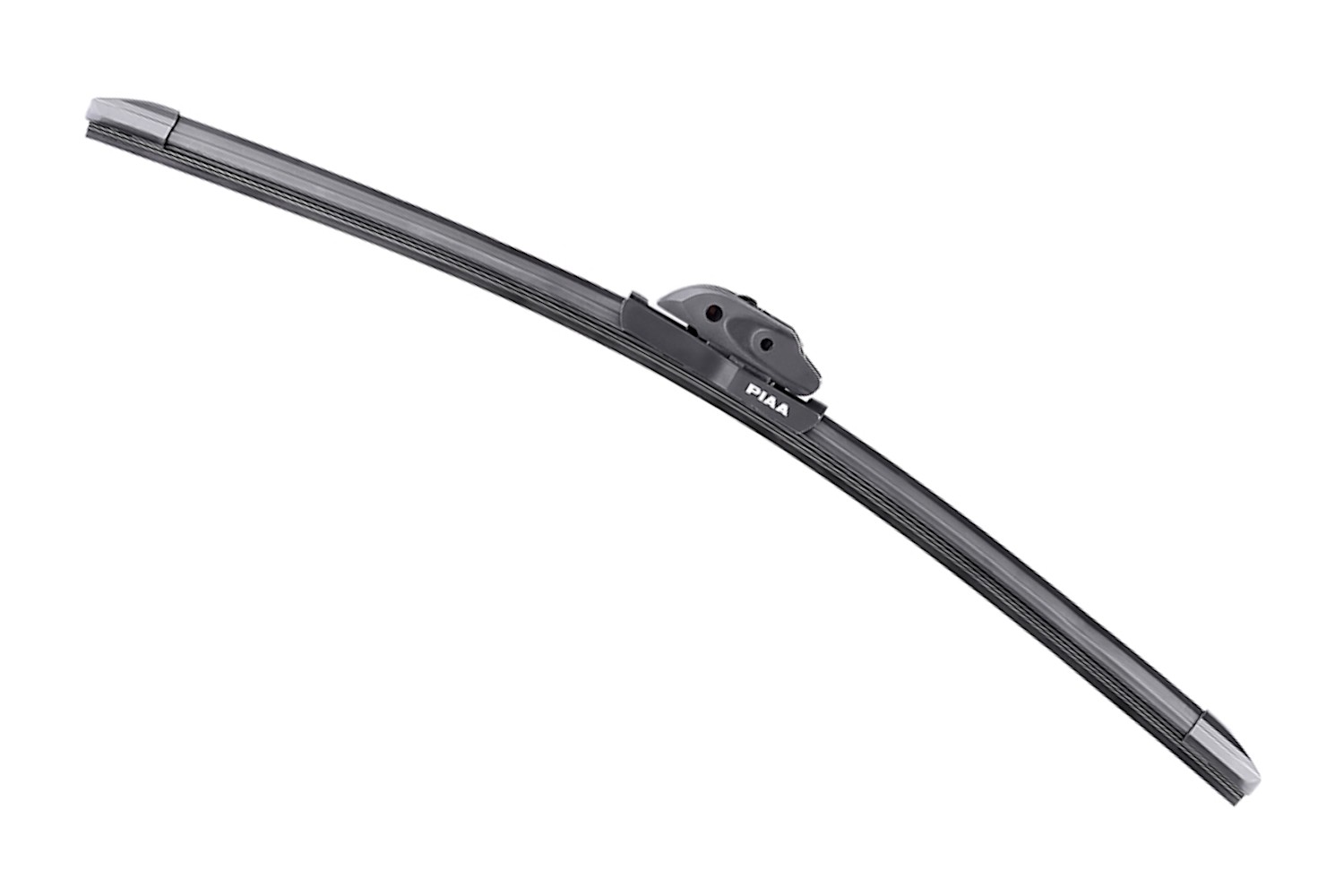
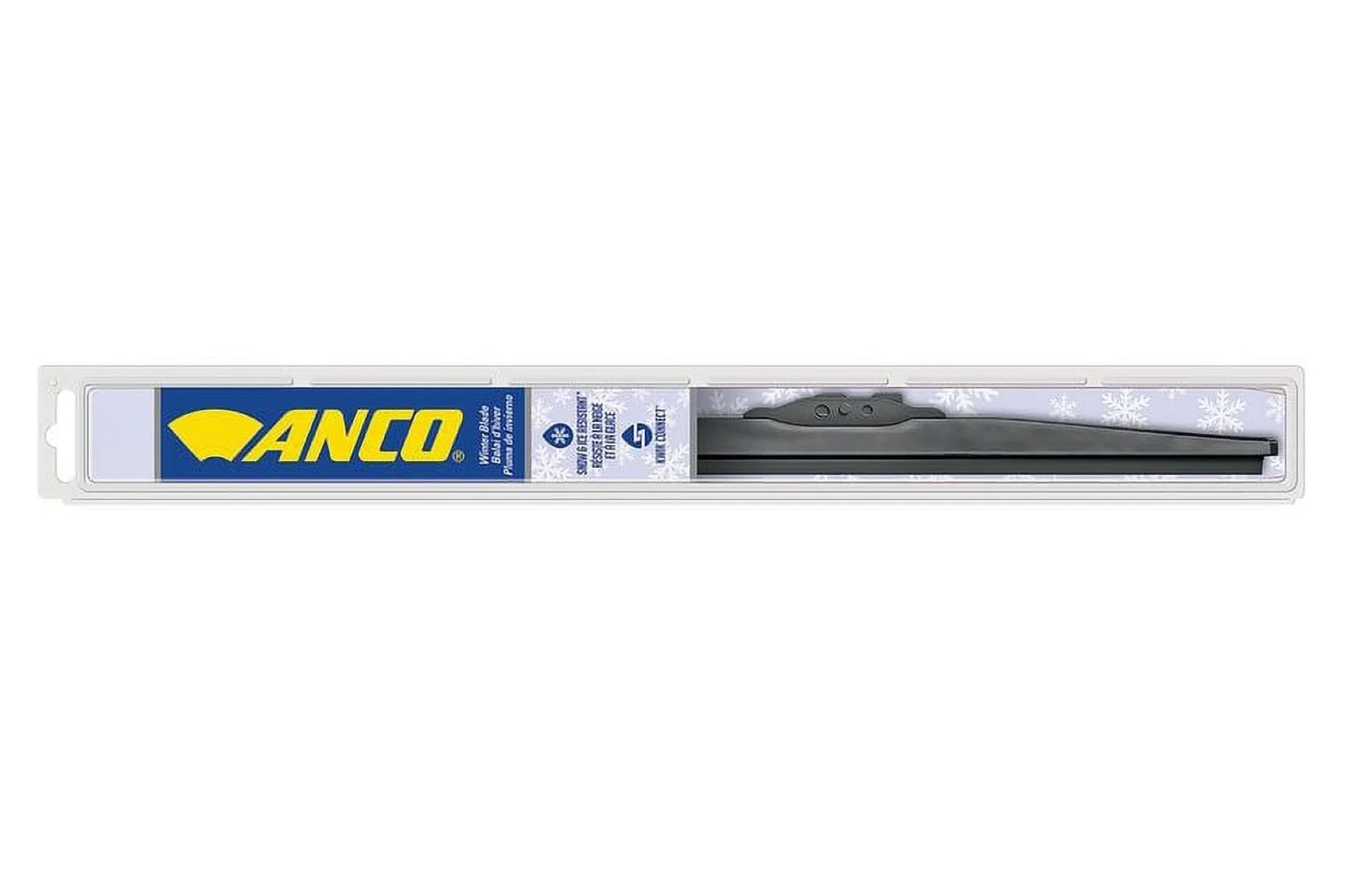

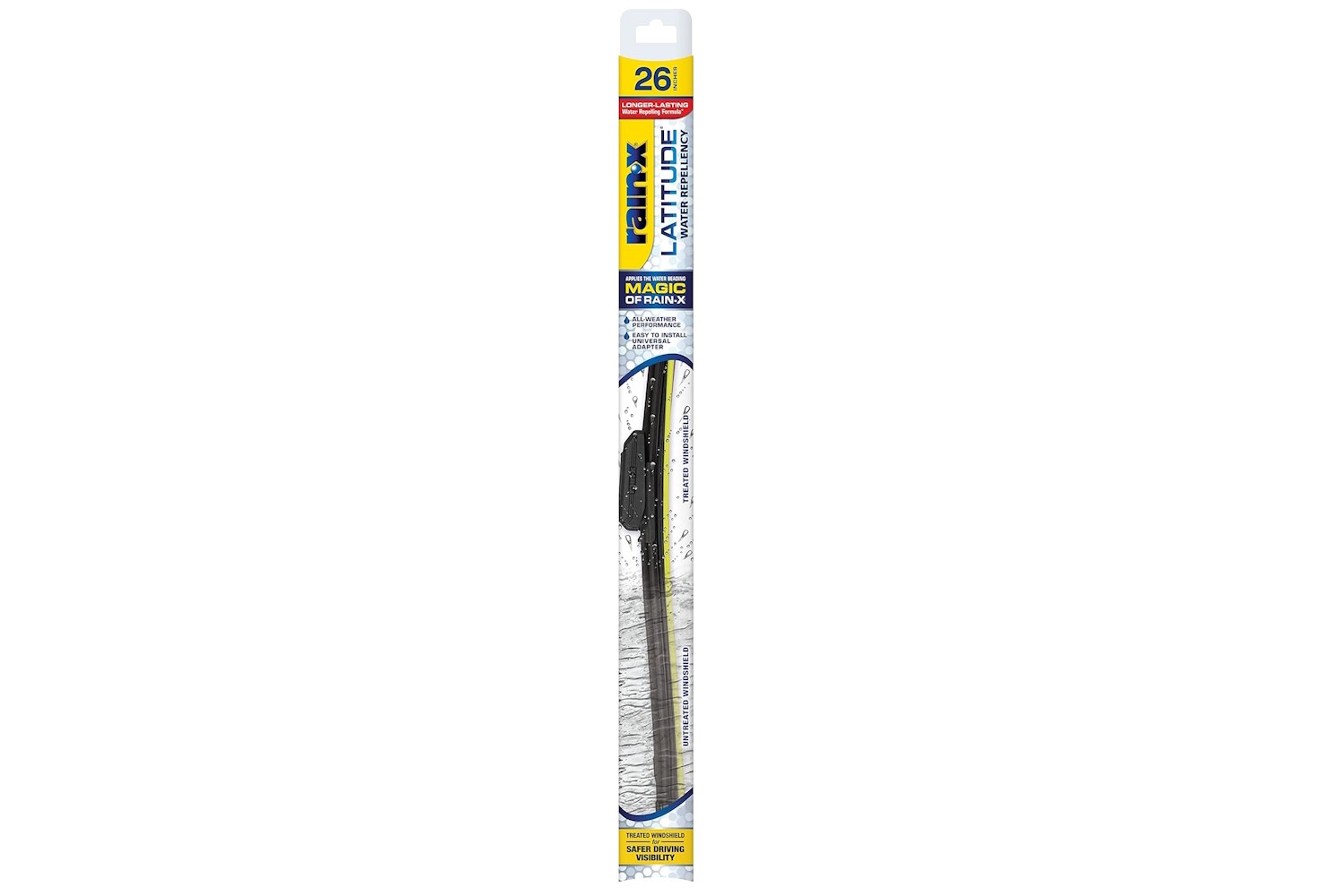
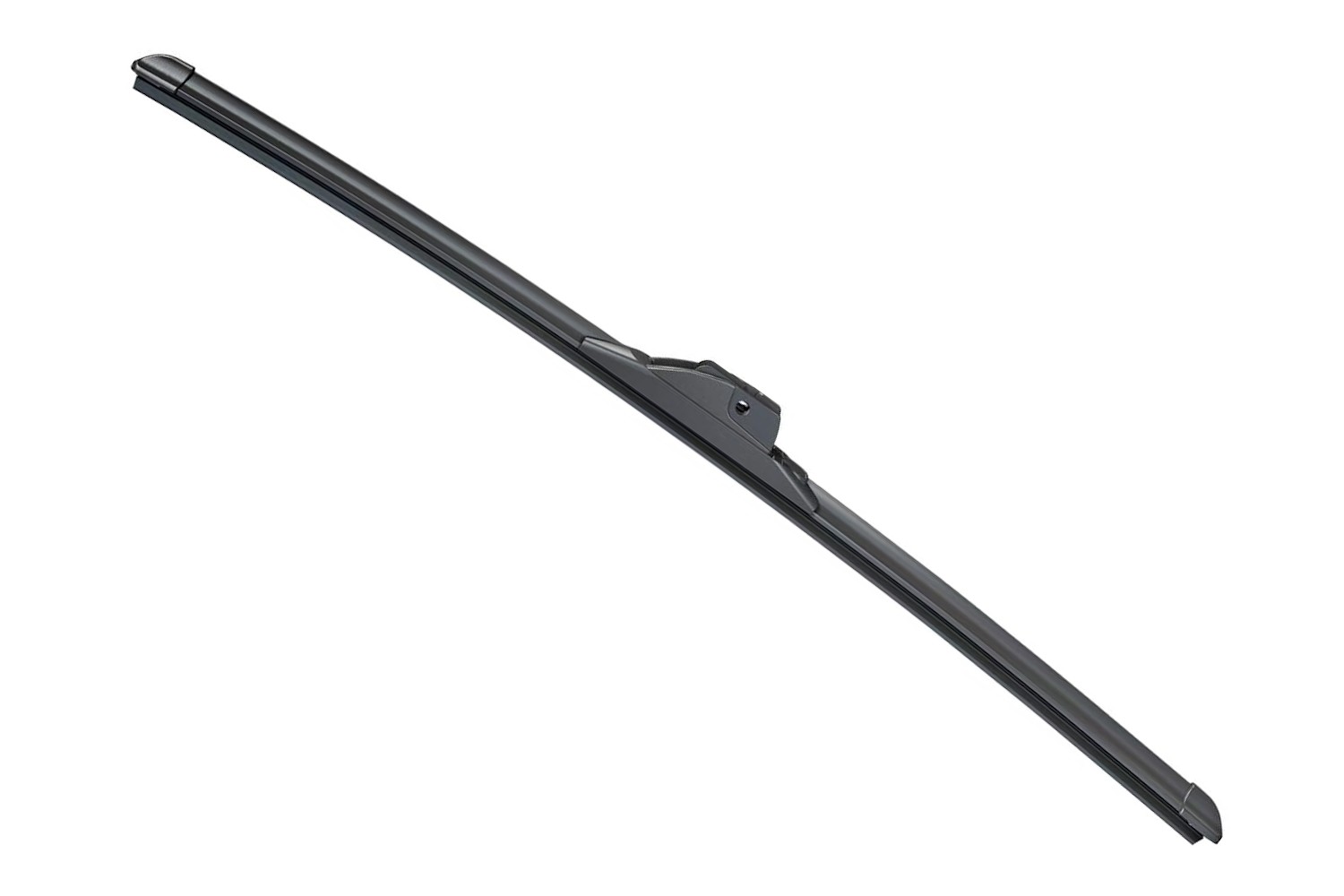
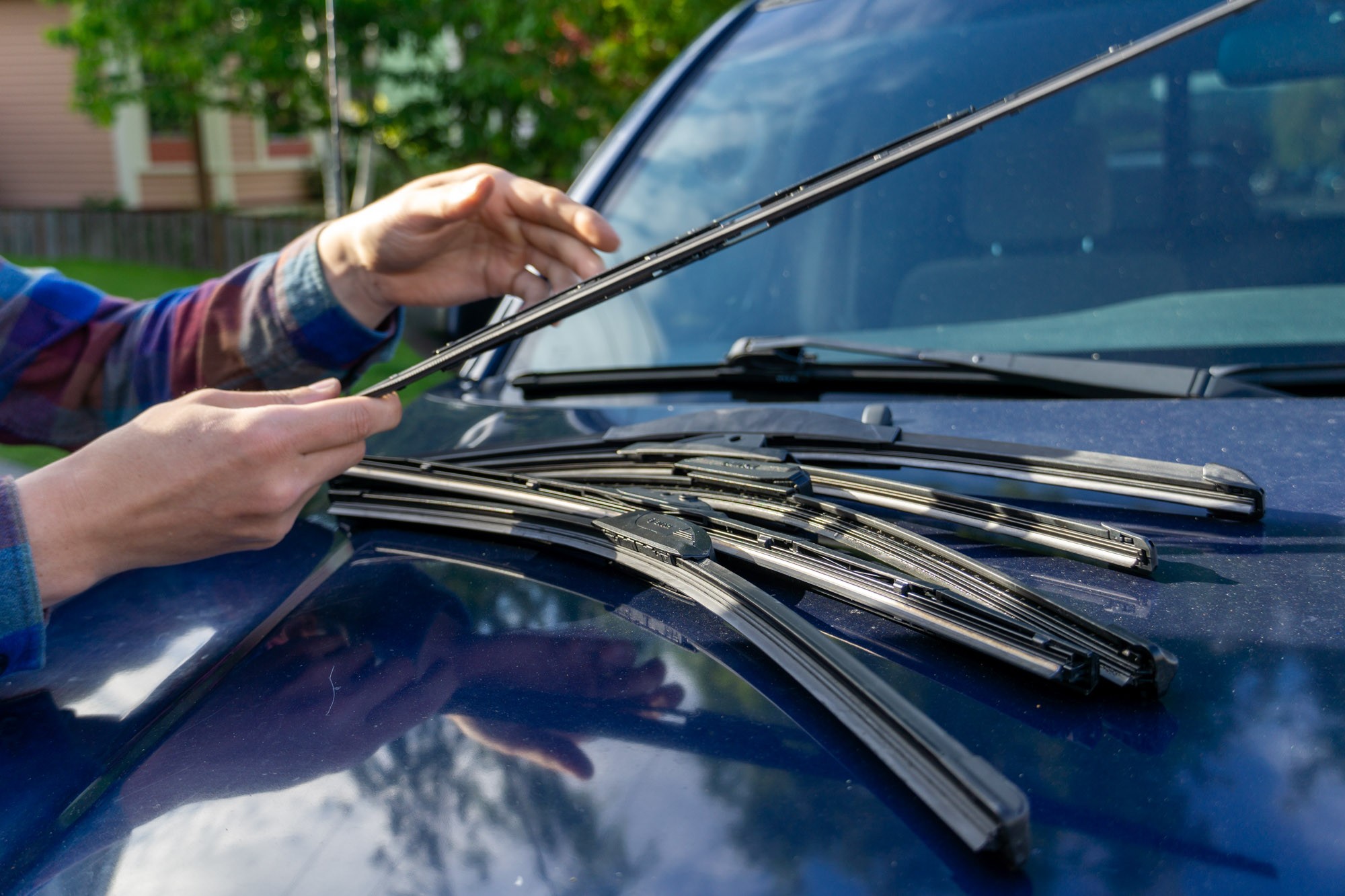
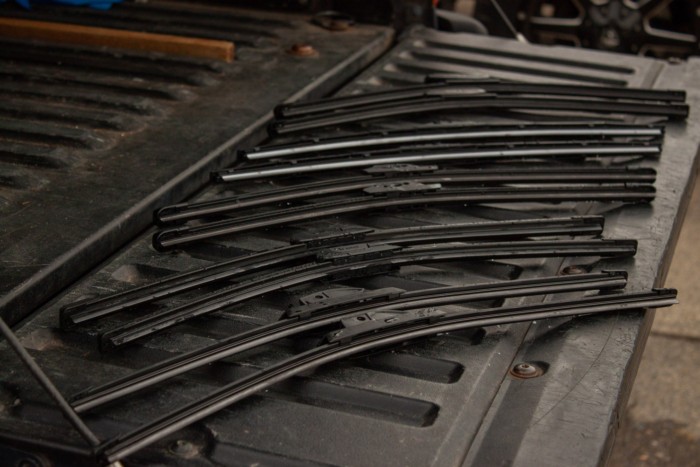

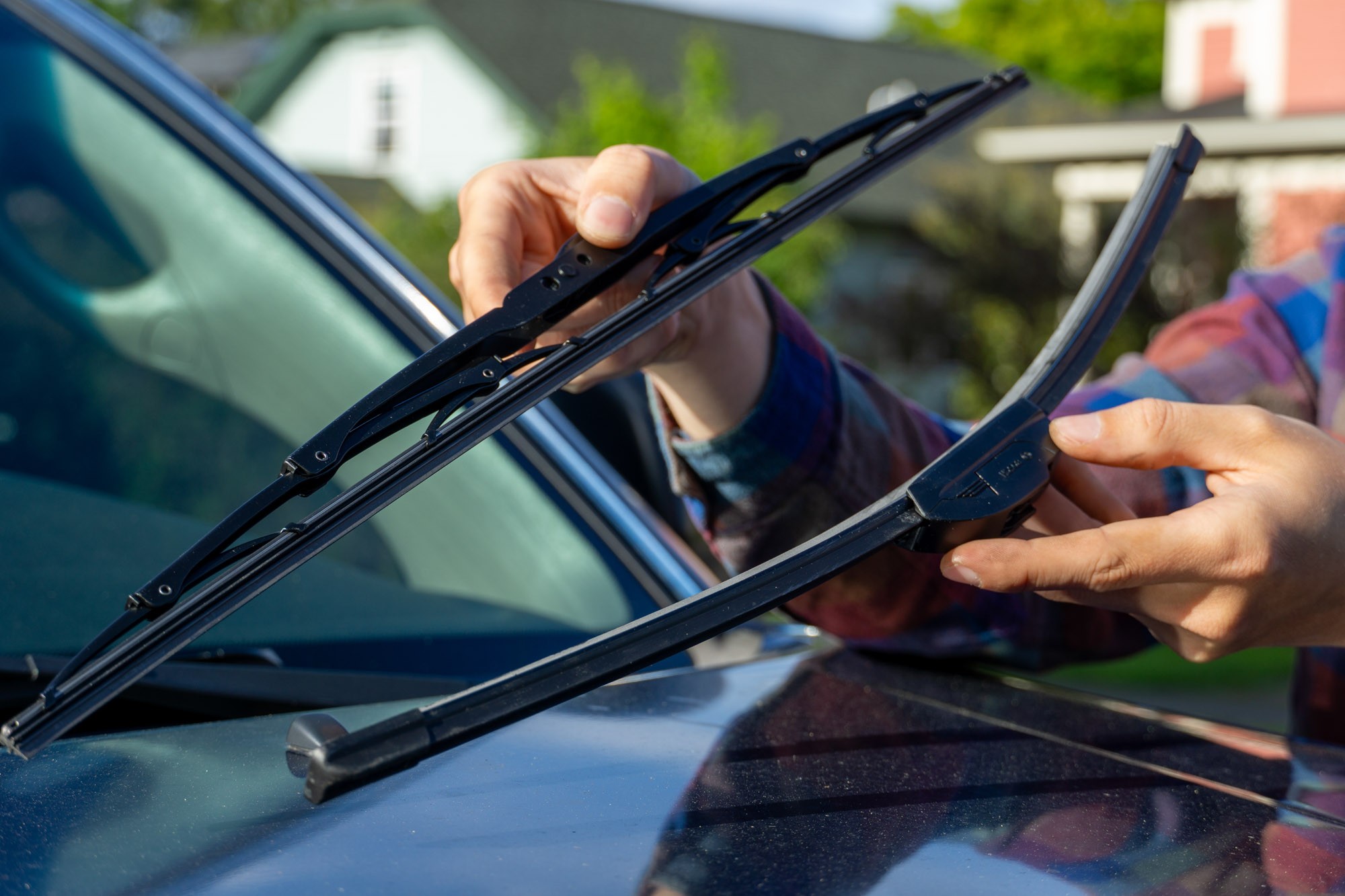
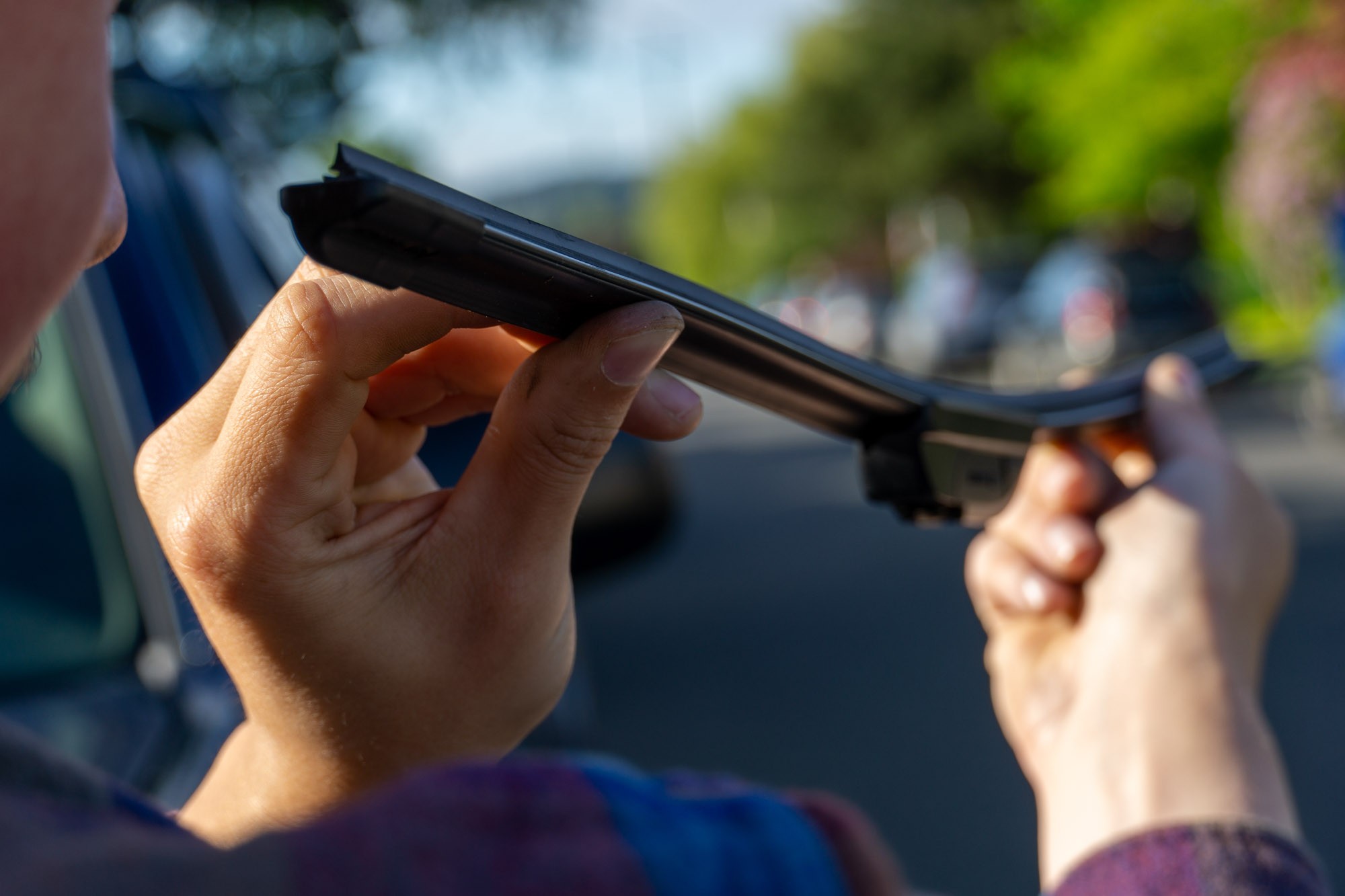
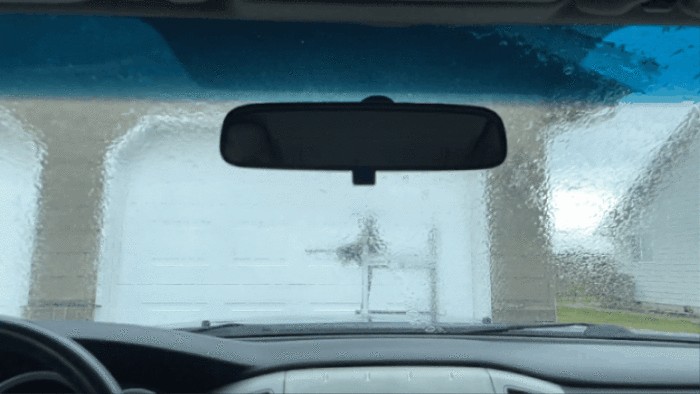

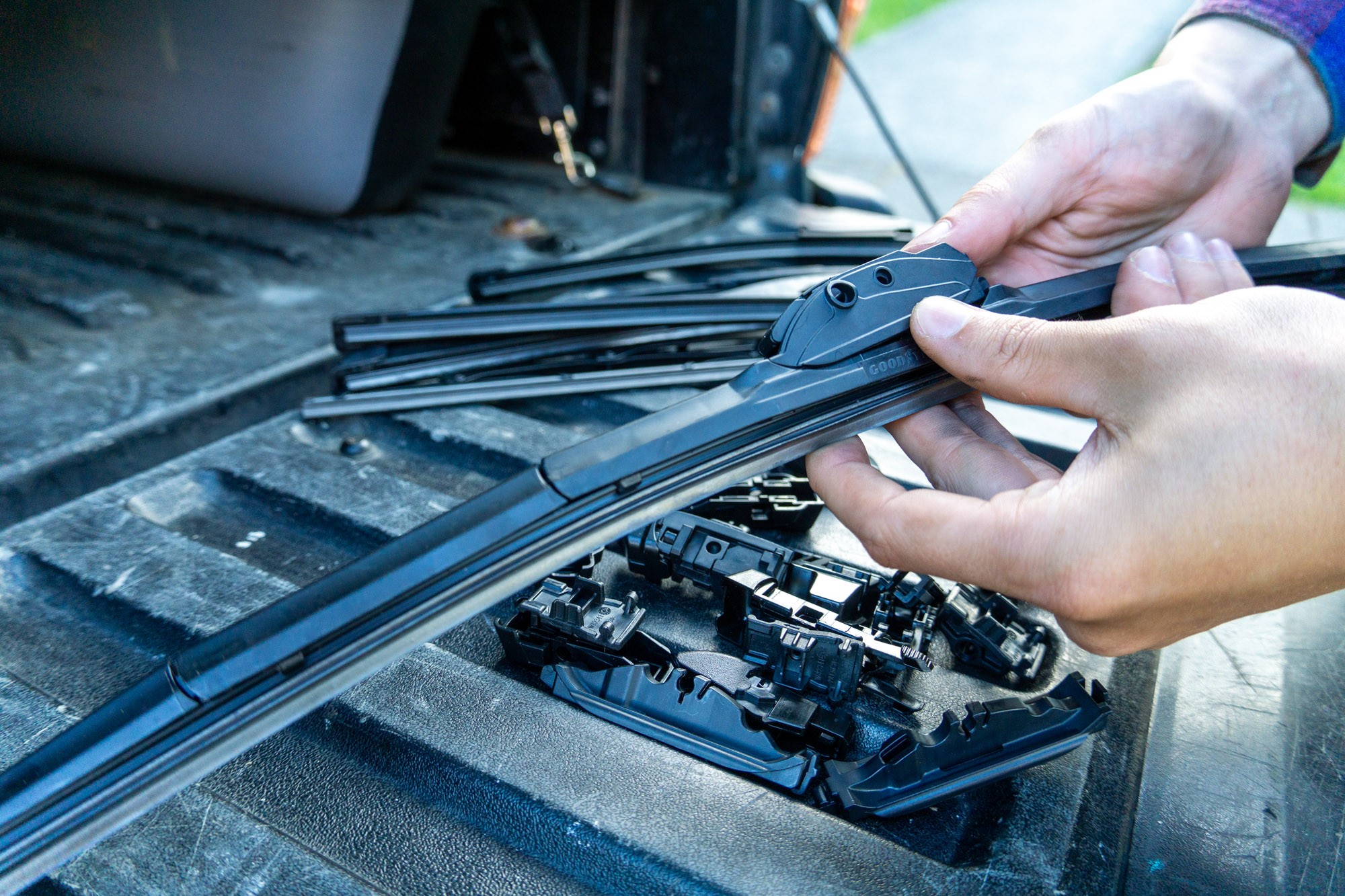
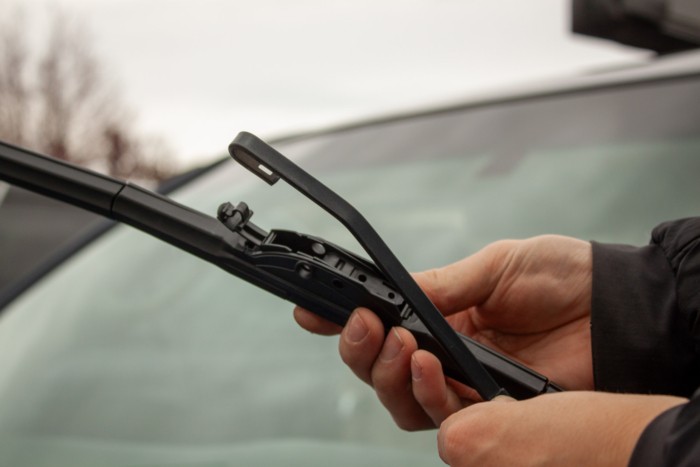
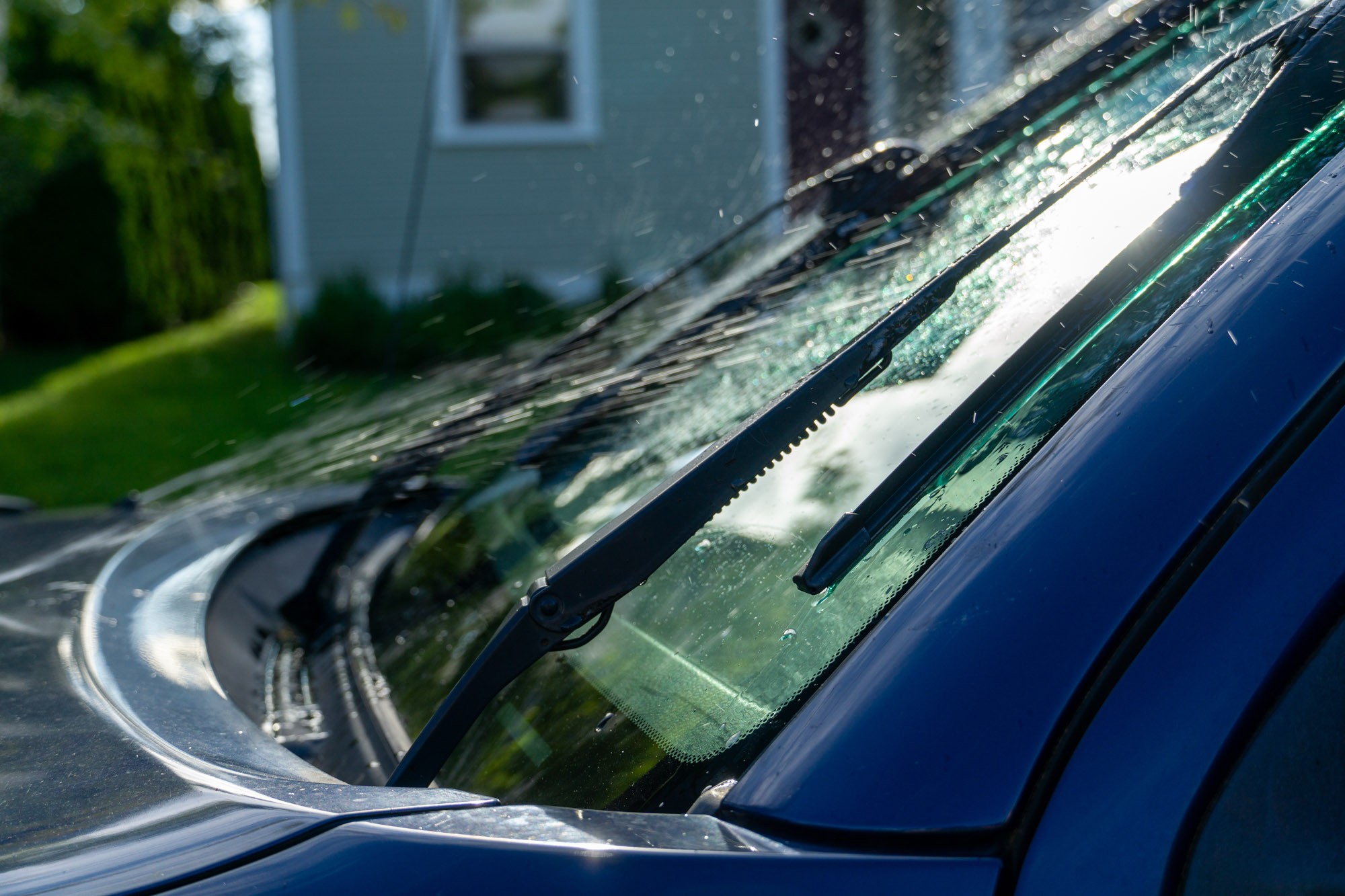
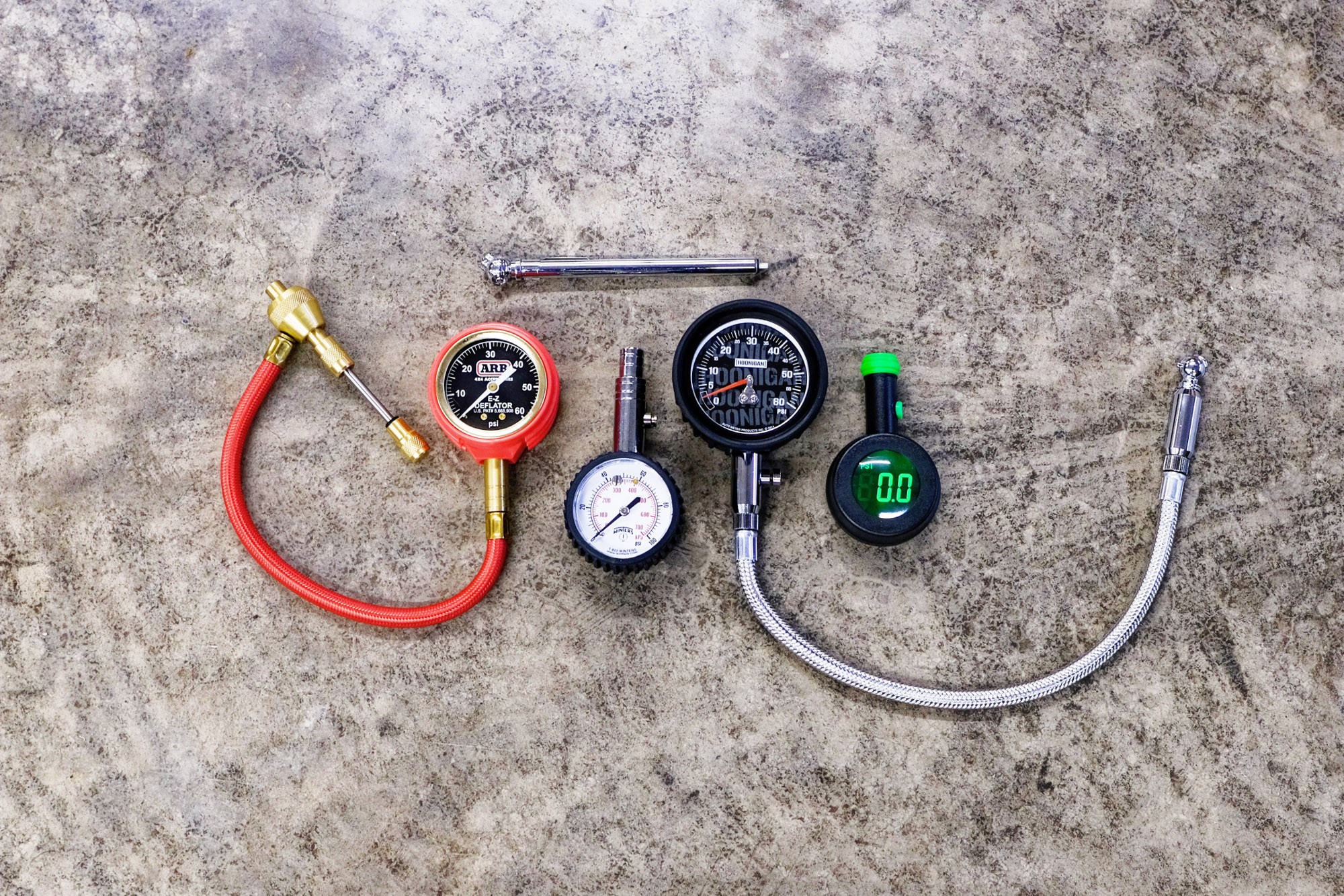
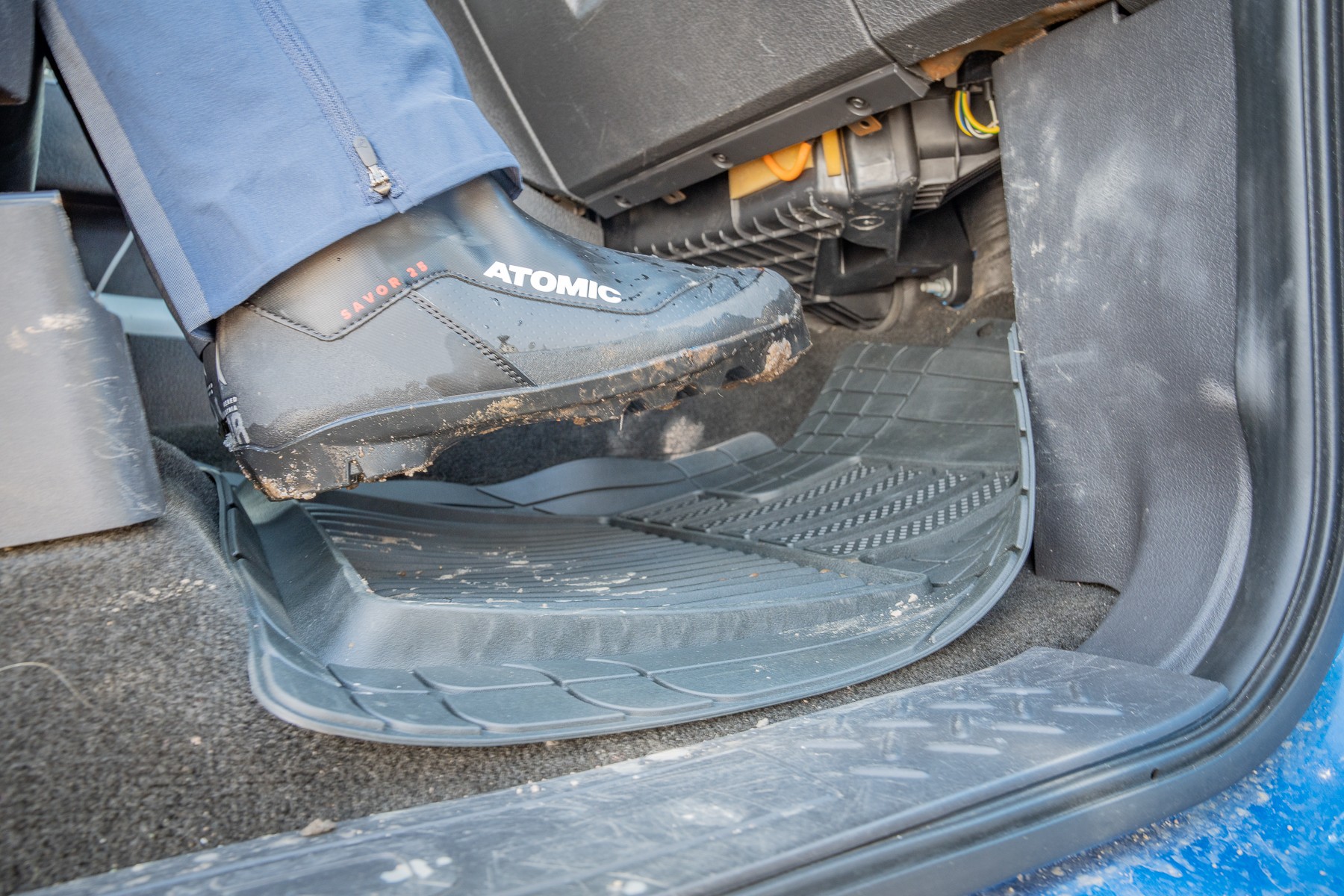
How We Tested the Best Windshield Wiper Brands
Thorough testing, including countless wiper blade swaps, provides us with deep insights into windshield wiper brand performance.
Recommending just any windshield wiper brand would be easy, but we aimed for a more rigorous approach to identify the truly exceptional brands and products. Our testing methodology was designed to differentiate between merely good and truly great wipers. This involved extensive research, online reviews, and insights from our team of experienced drivers regarding their preferred windshield wiper brands. Our final selection aims to cater to a wide spectrum of driver needs and preferences.
Our Testing Process and Environment
We adopted a scientific approach to our windshield wiper testing, aiming to eliminate marketing claims and generate objective, repeatable data. Our test setup included a Toyota Tacoma, strategically positioned sprinklers, a slow-motion camera, and an audio recorder.
Each wiper was tested under identical conditions: same water volume, same wiper speed. Performance was recorded and subsequently analyzed to determine water clearing efficiency and noise levels. For wipers requiring a wipe-on silicone treatment, we meticulously cleaned the windshield between tests to ensure a consistent and unbiased testing surface.
We also meticulously evaluated the installation and removal process for each wiper. Windshield wipers often utilize various adapters for different vehicle types. We challenged multiple testers to install each set without consulting instructions. This real-world installation experience provided valuable insights into ease of use and potential frustrations.
Beyond controlled stationary tests, we subjected the wipers to real-world driving conditions, including heavy rain on the Olympic Peninsula, snowstorms in British Columbia, and muddy trails. Frequent blade changes during testing allowed us to assess the ease of installation and removal in field conditions.
Finally, we continuously monitor the durability and longevity of these wiper blades. We use them on our vehicles in everyday driving conditions until they reach the end of their functional life. Our reviews are regularly updated to reflect long-term performance data, and we test new windshield wiper brands and models as they become available in the market.
Our Expert Testers
Based north of Seattle, in the famously rainy Pacific Northwest, our lead tester Nick Belcaster experiences significant annual rainfall, making reliable windshield wipers essential. His extensive experience includes not only frequent wiper blade replacements but also replacing a wiper motor due to overuse. His travels across the Western US have exposed him to diverse and challenging weather conditions, giving him ample opportunity to evaluate wiper performance in extreme situations.
Our wiper testing and brand recommendations are further informed by a diverse team of GearJunkie editors and contributors, each providing feedback from their own vehicle testing experiences.
Buyer’s Guide: Choosing the Right Windshield Wiper Brand
Proactive wiper replacement is crucial for maintaining clear visibility and driving safety.
While often an afterthought during routine car maintenance, windshield wipers are critical safety components. While makeshift solutions might be attempted in emergencies, relying on quality wipers is essential for safety. Just as maintaining clear headlights, proper tire inflation, and addressing engine issues are vital, ensuring effective windshield wipers is a key aspect of vehicle upkeep.
Our testing revealed significant technological advancements in these seemingly simple accessories. Factors like wiper design, blade material, and coatings can dramatically impact performance and longevity. Consider these factors when choosing your next set of wipers to ensure you get the best value and performance for your needs.
Windshield Wiper Blade Design
Understanding the differences between branch-style and beam-style wipers is key to choosing the right brand.
Windshield wiper blade design has evolved since their invention in 1903. Key improvements focus on enhancing squeegee performance. One primary area of innovation is blade frame design.
Traditional Branch Frames
Branch-style wipers are the older, more conventional design. They are relatively simple and can adapt to curved windshields, but they provide less force to maintain consistent contact with the glass. Typically constructed from painted or powder-coated steel, these frames can degrade and rust over time with heavy use.
In snowy and icy conditions, branch-style wipers are prone to ice buildup between the frame elements, leading to chattering and reduced wiping effectiveness. For drivers in drier climates, branch wipers like SilBlade Standards or PIAA Super Silicones can be a cost-effective option. We typically use branch-style wipers for rear windows where performance demands are less critical.
Beam Frames
Beam-style wipers are designed with curvature for consistent windshield contact.
Modern vehicles increasingly use beam-frame wipers. These designs, often one- or two-piece constructions with integrated metal bands, apply even pressure across the entire wiper length. Lacking distinct pressure points, beam-style wipers generally offer superior performance compared to branch-style wipers, with less chatter and better contact.
Beam-style wipers also maintain tighter contact with the windshield, improving aerodynamics, reducing wind noise, and minimizing lift at higher speeds. The Bosch Icon wipers are a prime example of perfected beam-style design, offering excellent flexibility and windshield conformity.
Hybrid Frames
Hybrid frames blend elements of both branch and beam designs. They typically incorporate a branch frame with an aerodynamic cover. This cover reduces wind lift and minimizes icing issues common with branch frames, offering a compromise between traditional and modern designs.
Performance Metrics
Quantifying wiper performance through controlled tests provides objective data for brand comparisons.
Objectively assessing wiper performance can be challenging, but we developed a quasi-scientific testing methodology to accurately compare brands and models. Using controlled water spray and slow-motion video, we simulated various rainfall intensities to evaluate wiper effectiveness.
The primary wipe stroke is crucial for water removal. We assessed each wiper for clean, streak-free motion without shuddering, and recorded audio to compare noise levels. Less effective wipers often exhibited issues at the blade ends and increased streaking.
During pauses between wipes, we evaluated how effectively each blade cleared water by observing windshield clarity before the next spray. Beam-style wipers generally provided more uniform contact and better water removal across the windshield surface compared to branch-style wipers.
Silicone wipers demonstrated a noticeable advantage. After just a few wipes, silicone transfer to the glass began, enhancing water beading and improving visibility. This silicone coating aided in water removal between wipes, potentially allowing for lower wiper speed settings.
Wiper Blade Materials
Blade material significantly impacts water clearing effectiveness and wiper longevity.
The wiper blade or squeegee material is where the wiper interacts directly with the windshield. These thin strips, typically rubber or silicone, are shaped to conform to the windshield curvature, effectively squeegeeing water away.
Rubber Blades
Natural rubber has been the dominant wiper blade material for decades and remains widely used. Rubber blades offer good wiping performance when well-maintained. However, dirty windshields are a major cause of rubber blade degradation, leading to gumming and reduced wiping effectiveness.
Rubber blades have a limited lifespan due to their susceptibility to UV damage, ozone exposure, and temperature extremes.
Silicone Blades
Silicone wipers, while often pricier, offer several advantages over rubber, including superior resistance to environmental degradation. Silicone wipers also deposit a thin layer of silicone on the windshield with each wipe, enhancing water repellency, a feature we highly value.
Brands like Rain-X Silicone Endura and PIAA Si-Tech consistently outperformed rubber wipers in our tests. Their performance often improves with use as the silicone layer beds into the windshield surface.
Coated Blades
Both rubber and silicone blades are often treated with coatings like Teflon or graphite to reduce friction. These coatings, while not permanent, enhance performance and reduce wear, extending wiper life.
The graphite coating on Rain-X Latitudes contributes to their quiet operation, while the ceramic coating on Trico Silicone Ceramics offers advanced friction reduction for smoother wiping.
Diverse wiper blade mounting systems require careful attention to compatibility.
Wiper Blade Mounting Systems
While J-hook is the most common wiper arm attachment type, vehicles utilize various mounting styles, including side pins, bayonets, and push-button mounts.
To ensure broad vehicle compatibility, wiper blade manufacturers often incorporate multiple adapters into a universal mount. Given the complexity of wiper attachment systems, consulting an auto parts store or online compatibility resource is recommended to verify wiper compatibility with your specific vehicle.
“Exact fit” wiper blades are also available, designed to meet original equipment (OE) specifications for specific vehicle models. These blades eliminate adapters and simplify installation, ensuring a direct and secure fit.
J-hook is a prevalent and widely compatible windshield wiper mounting style.
Durability and Replacement Timing
Even the best windshield wipers eventually require replacement. Investing in durable wipers can extend replacement intervals. Regular wiper replacement should be part of your vehicle maintenance schedule.
Most wipers begin to show performance degradation around six months, with many needing replacement within a year. Higher-quality wipers, particularly silicone beam designs, can last up to two years with minimal performance loss.
Beam-style wipers, with fewer moving parts, and silicone wipers, with their superior material stability, generally offer greater durability.
Using a water-repellent treatment like Rain-X can significantly improve wiper performance by reducing water accumulation on the windshield. Regular cleaning of wiper blades also prolongs their life by removing debris that can damage the blade material.
Replace wipers when streaking, chattering, or squeaking becomes noticeable.
Timely wiper replacement is essential for maintaining optimal visibility in all driving conditions.
Price and Value Considerations for Windshield Wiper Brands
Windshield wipers are a relatively inexpensive maintenance item, but choosing wisely offers significant value. The ideal wiper choice depends largely on local climate and driving conditions. Drivers in rainy or snowy regions will prioritize performance and durability more than those in drier areas.
Budget Options
In drier climates or for vehicles used primarily in fair weather, budget wipers can be sufficient. These are typically rubber branch-style blades, offering basic functionality at a low cost. The AERO Voyager J-Hook is a notable exception, offering a beam-style design even at a budget price point.
Mid-Tier Brands
The $20-$30 per wiper range offers a balance of performance and value. The Rain-X Silicone Endura, priced around $26, offers enhanced performance with silicone blades. Beam-style wipers become more common in this range, providing better windshield contact. The Bosch Icon at $30 is a top performer in this category.
Premium Brands
Spending over $30 per wiper signifies a commitment to top-tier performance. While seemingly expensive, premium wipers like the PIAA Si-Tech ($36) offer silicone blades and robust beam designs for maximum performance and longevity. These are ideal for drivers in demanding climates or those who prioritize peak wiper performance.
Frequently Asked Questions About Windshield Wiper Brands
Which windshield wiper brand is rated the best?
We recommend Rain-X Silicone Endura as the best overall windshield wiper brand. Their silicone blades offer superior performance and deposit a water-repellent coating over time.
For a slightly higher price, PIAA Si-Tech wipers are essentially the same but include a wipe-on water repellent treatment, further enhancing performance.
Do more expensive windshield wiper brands really make a difference?
Extremely expensive wipers might offer diminishing returns, but very cheap wipers will likely compromise performance. A solid mid-range brand like Bosch Icon or Rain-X Latitude offers excellent performance without excessive cost.
More expensive wipers often feature beam-style designs and silicone blades, both contributing to improved performance and extended lifespan.
Which windshield wiper brand lasts the longest?
Silicone wipers generally outlast rubber wipers due to their resistance to environmental degradation. Beam-style designs also tend to be more durable than branch-style wipers.
PIAA Si-Tech wipers are notable for longevity, combining high-quality materials with available wiper refills to extend their lifespan.
What is the average lifespan of a windshield wiper?
Average windshield wipers last about a year with regular use, potentially longer with frequent cleaning. High-end silicone wipers can last even longer.
Streaking or noise during operation are indicators that it’s time to replace your wipers.
Are silicone wiper blades truly better than rubber?
For optimal all-weather performance, silicone wipers are generally superior. They provide smoother wiping and last significantly longer than rubber.
However, in extremely cold and icy conditions, rubber wipers might be preferable as silicone can become stiff and potentially tear when forced over ice.
Motors
The Best Tire Pressure Gauges of 2024
Maintaining proper tire pressure is crucial for vehicle safety and efficiency. Our guide to the best tire pressure gauges helps you keep your tires properly inflated.
Motors
The Best Car Floor Mats of 2025
Keep your vehicle interior clean and protected with our top picks for car floor mats from leading brands like WeatherTech and Husky Liners.